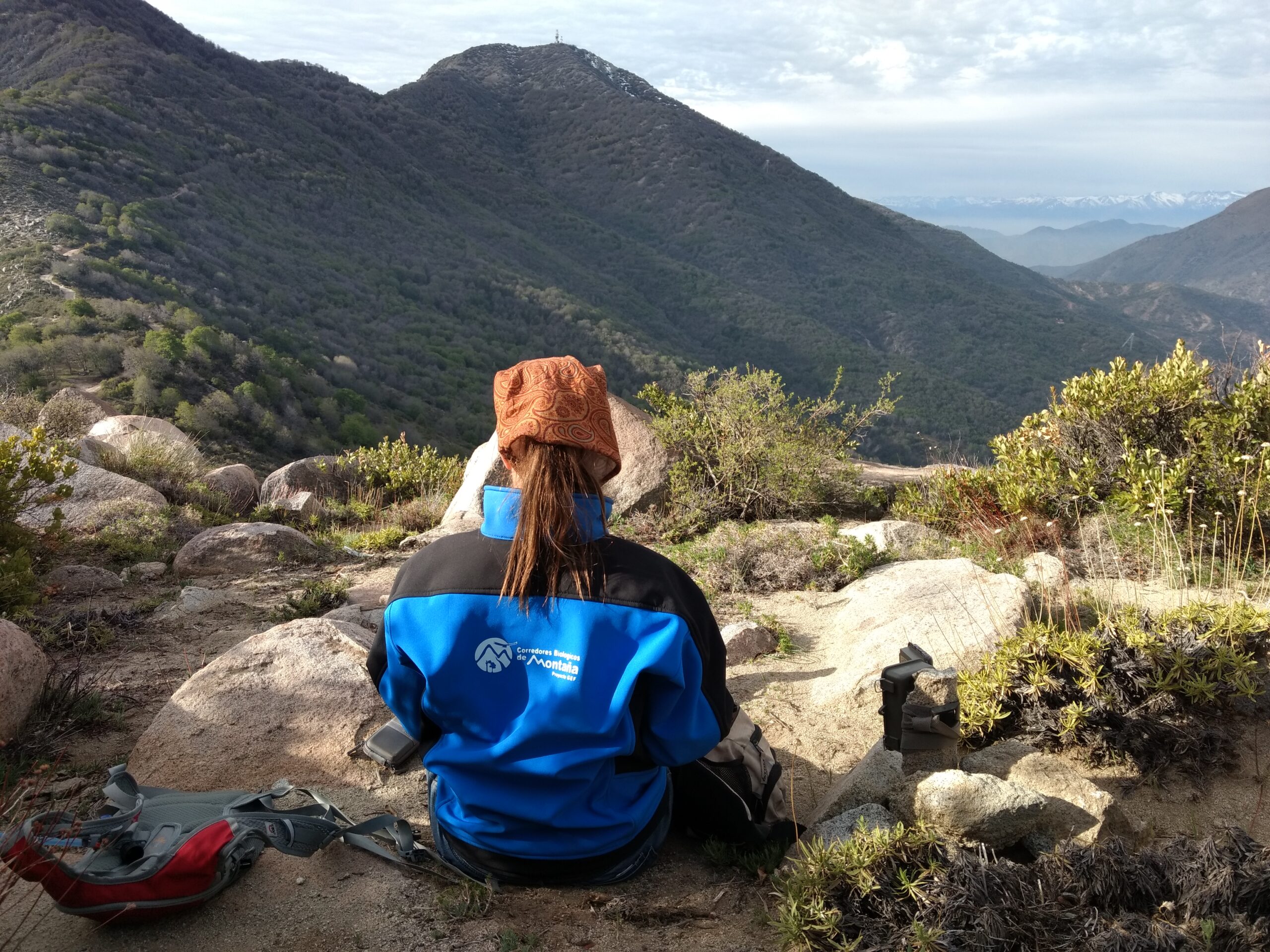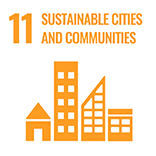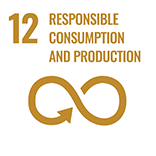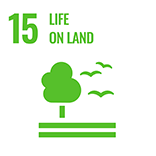Protecting Biodiversity and Multiple Ecosystem Services in Mountain Biological Corridors of the Mediterranean Ecosystem in the Santiago and Valparaíso regions, Chile (GEF-Montaña)

Summary
The solution implemented in the mountains of the Santiago Metropolitan region and part of the Valparaíso region seeks to contribute to the development of public-private initiatives that allow the conservation of biodiversity and protect or enhance the benefits provided by mountain ecosystems, by strengthening municipal capacities related to protecting biodiversity and strengthening biodiversity monitoring and promoting good productive practices in the territory.
The above describes the main objective of the project “Protecting Biodiversity and Multiple Ecosystem Services in Mountain Biological Corridors of the Mediterranean Ecosystem of Chile”, briefly called GEF-Montaña, which is implemented in a region with biodiversity hotspots that has the largest population in the country, strongly pressured, in a context of intense drought, heat waves and mega fires. The other two components of the project seek to minimize the negative impact that some productive activities have on biodiversity. For this, good practices will be promoted in tourism, agricultural, livestock and forestry activities. In addition, incentive instruments will be perfected, as well as integrated under a landscape scale perspective, declaring for the first time in Chile the figure of “District of Soil, Water and Forest Conservation”. The first district pilot was implemented under an agreement with the Ministry of Agriculture in a territory of 500,000 ha in the municipality of San José de Maipo, an area of high Andean mountains and glaciers. In this municipality there are livestock communities with a tradition dating back many years with which they seek to implement adaptation techniques and protection of the territory that is affected by CC, drought and livestock overexploitation.
Chile has one of the most unique habitats in terms of flora and fauna, known as the Mediterranean ecosystem. These spaces, when they are in the mountains, provide multiple benefits such as the provision of water, air purification, soil formation, pollination, recreation and the sustenance of biodiversity. However, there is a growing degradation of biodiversity, soils and water in the mountain territories of the Central Zone of Chile, despite growing efforts by public and private institutions, in the last ten years, to reverse the deterioration. In some municipalities there are no regulations for land use and only a few actions are carried out to implement practices for biodiversity protection.
Overview
- Location:
- Implementation sites:
-
- Single country
- Multiple locations
- Mountain region:
-
Andes
- Province:
-
- Metropolitan Region of Santiago
- Site locations:
-
Municipality of San José de Maipo
- Solution scale:
- Area Covered:
-
- 500 km2
- Ecosystem type(s):
- Solution type(s):
- Sector(s):
- Other climate impact(s) addressed:
-
- water, soil and biodiversity degradation
- Climate impact time-scale(s):
- Main benefit associated with the solution:
- Co-benefit(s) associated with the solution implementation:
- Implementation timeline:
-
- 2016 - 2021
Solution details
Main beneficiaries & outcomes
The main benefits associated with the project are:
- Development of public-private initiatives that allow the conservation of biodiversity and protect or enhance the benefits provided by the mountains of the Santiago Metropolitan region and part of the Valparaíso region, by strengthening municipal capacities, permanently monitoring their ecosystems and incorporating good productive practices in the territory.
- Minimize the negative impact that some productive activities have on biodiversity. The first district pilot was implemented under an agreement with the Ministry of Agriculture in a territory of 500,000 ha in the municipality of San José de Maipo, an area of high Andean mountains and glaciers.
One of the components that the project seeks to promote is local environmental management, considered a strategic axis. This component proposes the sustainable development of the territory, which involves the strengthening of municipal environmental units, incorporating traditional environmental issues, the management and conservation of biodiversity, water and soils. This will make it possible to improve environmental governance in the 36 municipalities in the project area that have wild territories. Eco-local plans were implemented in 36 municipalities (including San José de Maipo) at the landscape scale. Maps of CC vulnerability areas were made to make proposals for instruments for restoration and training of municipalities.
Around 500,000 ha were declared in the San José de Maipo municipality as an “Integrated Conservation District for soil, water and forests”. This figure aims to prevent soil erosion and reclaim eroded land to ensure that ecosystem services and forests are protected. To enter the figure of the districts, it is necessary to demonstrate the condition of the soils. When declaring a District by the Ministry of Agriculture, a series of funds from said service are prioritized and promote the implementation of management plans on properties that are voluntarily assigned to the District.
Planning and implementation
The project covers 36 communes and benefits 30 municipalities in the Metropolitan region and 6 in the Valparaíso region. It is an initiative of the Ministry of the Environment, which conducts it in alliance with key actors that allow the objectives of this initiative to be fulfilled. Some actors are the Association of Rural Municipalities, the Cordillera Park Association, the Metropolitan Regional Government, the Undersecretariat of Regional and Administrative Development (SUBDERE), the Agricultural Livestock Service, the National Forestry Corporation (CONAF), the Clean Production Council, the Institute of Agricultural Development (INDAP), the Office of Agrarian Studies and Policies (ODEPA), the Regional Ministerial Secretaries (SEREMI), municipalities, universities, among other important collaborators to which some private companies join.
Finance
The Project is financed by the Global Environmental Fund (GEF) and supervised by UN Environment. The total budget for the initiative amounts to USD 32,609,605, from which USD 5,657,201 corresponds to the contribution of the GEF and USD 26,952,404 to co-financing of organizations and institutions partners and implementers of the Project.
https://gefmontana.mma.gob.cl/recursos/presentaciones/
Innovation
One of the greatest innovations related to the project is the implementation of the Soil Conservation District model (Law No. 18,378 of the Ministry of Agriculture) in various municipalities of the country. However, this model is not entirely formalized and has been only recognized through agreements with the Ministry of Agriculture. The empowerment of the municipalities through training activities developed within the GEF-Montaña project (Manual of good practices, conservation districts) have allowed a good appropriation of the policies at the municipal level and an adaptation of those policies with local needs.
Performance evaluation
In 2020 a mid-term performance evaluation was conducted of the project in terms of its strategic relevance, effectiveness and efficiency, with the objective to review the quality of the initiative design and the monitoring system implemented, identify the factors that have affected its performance and determine the probability that the results and effects are maintained over time. To meet this objective, a participatory and collaborative methodological approach was used, combining quantitative and qualitative collection techniques and instruments.
Long term project sustainability and maintenance
The study called “Floristic and vegetative survey in the area of the GEF Mountain Biological Corridors Project”, identified 660 species of flora and 180 plant formations through a sampling that was concentrated in natural mountain areas, covering 506 plots in nine provinces of the Metropolitan and Valparaíso Regions. The information collected by the study is part of the System of Information and Monitoring of Biodiversity and Ecosystem Services (SIMBIO) of the Metropolitan Region, which seeks to give expression in the territory to the values of biodiversity and its ecosystem services and, with it, guide the management of local governments. In addition, work is being done on the installation of the first long-term monitoring site of the GLORIA-Andes Network in the region (Río Clarillo Reserve).
Capacities for design and implementation
Knowledge
Within the GEF-Montaña project, a central axis is the strengthening of the municipalities so that they push public policy from the bottom up, according to their local needs. Through the project, trainings were given to municipal government officials so that they know their natural landscape and can conserve and reduce vulnerability to the effects of CC. A diploma for environmental professionals was also created. Municipalities can propose projects related to wetland conservation, payment for environmental service, mitigation, flood control, river channel rescue and coexistence with wildlife. With the aim of facilitating the work of municipal officials in decision-making and strengthening local environmental management in terms of protection, sustainable use of biodiversity and natural resources, the manual “Good Municipal Practices for Biodiversity Management”. The document compiles various experiences in environmental management for the protection of biodiversity at the local level of 18 communes in the Valparaíso and Metropolitan regions, which are part of the GEF-Montaña Project.
Technology
The GEF Montaña Project has proposed and designed a series of Good Productive Practices such as BIO + Forest Management to recover and restore the natural functionality of the altered sclerophyllous forest; Organic beekeeping aimed at honey producers who want to produce free of agrochemicals; pilots of recovery of degraded soils and new technologies to face the drought that affects the central zone of Chile using crops adapted to arid zones combined with rainwater harvesting systems; Regenerative Mountain Livestock that seeks to modernize and reconcile livestock production modes with the conservation of mountain ecosystems.
Political / Legal
The GEF-Montaña project is related to other planning exercises carried out by the Ministry of the Environment throughout the territory. The first exercise to define Action Plans was carried out at the regional level 7 years ago. Regional plans for adaptation to climate change are developed throughout the country as planning exercises at the sub-national level. The head of the GEF-Montaña comments how, at the beginning, the decision makers did not commit to the plans, it was necessary to change the inertia of public policy and invest money in matters in which it was not invested. Now the CC increasingly permeates the discourse of decision makers as a way to get out of the economic crisis in a sustainable way. However, according to the same interviewee, the regional action plans need to be better integrated because many times the municipalities are not aware of it and are not adapted to the scale of what they need. The same happens between the national strategy and the regional plans that are disjointed.
Institutional
After two years of work with municipalities of the Metropolitan and Valparaíso regions, public services of both regions, and together with three faculties of the University of Chile, the GEF-Montaña Project contributed to the implementation of the instrument of “Plan Eco-Local”, which collaborates with the integration of the ecological dimension to the territorial ordering of the communes. It is an environmental management tool that will allow municipalities, private associations, non-governmental organizations and civil society organizations to guide their work and focus their management efforts to protect biodiversity and ecosystem services in the natural area of their communes. Ecological Planning at the local scale provides technical information for decision-making at the municipal level, through, for example, the creation of ecological trails to raise awareness in the community or the definition of wetland cadastres.
In the municipality of San José de Maipo, workshops were held for the construction of the Conservation District Master Plan and the proposal for the creation of a Municipal Natural Reserve (RENAMU), which is articulated with the approval of a Municipal Environmental Ordinance. The Master Plan seeks that livestock, beekeeping, tourism and agricultural activities continue to be developed in a sustainable and responsible way with natural resources and biodiversity. It involves a zoning map of the district with a number of animals allowed. It was defined that 36% of the San José de Maipo commune has moderate, severe or very severe erosion, and 60% of the remaining surface corresponds to glaciers and high peaks. However, according to an environmental manager in the municipality, the conservation district master plan still remains in theory and does not reach practice.
Socio-cultural
Within the GEF-Montaña project, the municipality of San José de Maipo works with small landowners and rural communities dedicated to high mountain cattle ranching. The Livestock Pilot Plan was developed with the community of Las Tórtolas, for which a diagnosis of the territory was made to gather information, reach a more sustainable management and carry out regenerative livestock with groups of farmers. There is also support from the INDAP forestry program for vulnerable small farmers, and several pilot workshops were held in a comprehensive manner, involving networks of professionals.
However, the person in charge of the forestry development program of the San José de Maipo municipality comments that the project with the community of Las Tórtolas is still in the pilot phase and there is a lack of training and learning to raise awareness in the communities about the situation of soils, livestock management and the need for conservation projects. According to existing regulations, ranchers must approve a management plan to regularize tenure on their land. Even though most communities define themselves as sustainable, work is still needed to reach the regenerative livestock model, especially with the elderly.
Outlook & Scalability
Barriers and adverse effects
Sub-national coordination spaces (for example, Regional Climate Change Committees, CORECC) on CCA are not sufficiently articulated with local needs and realities, so they lack concrete use by local actors. In addition, the process of raising awareness of local communities for a transition towards a regenerative livestock model is a slow process that faces certain local resistance towards the adoption of conservation practices.
Transformation and future outlook
The solution supports fundamental change in CCA in the area by strengthening local municipalities’ capacities and resources to implement policy instruments for biodiversity conservation and territorial planning on a long-term perspective.
Potential for upscaling and replication
The strengthening of capacities of the municipalities, through the figure of the Conservation Districts, represents an opportunity to influence the national process of intersectoral articulation between the ministries of environment and agriculture, and between the objectives of environmental conservation and productive development.








Comments
There is no content